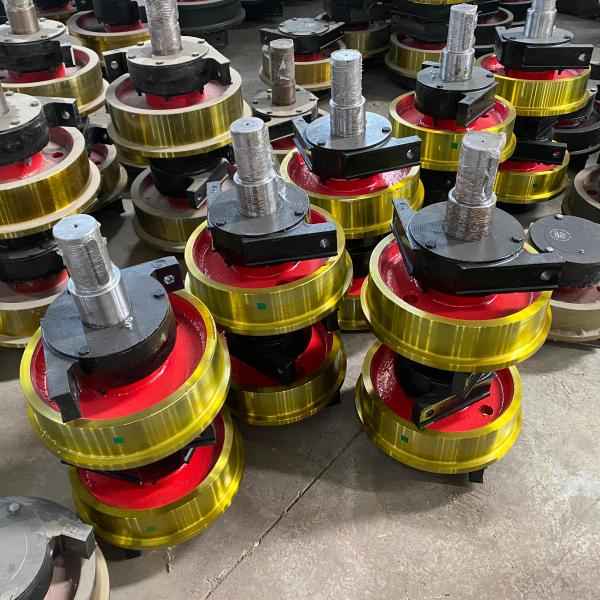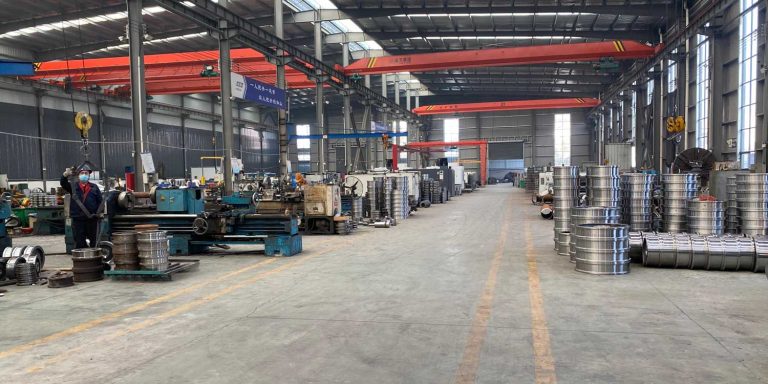FEM Standard Requirements for Crane Hooks and Wheels
In modern lifting equipment, crane hooks and wheels are critical components that determine the safety, reliability, and performance of a crane. To ensure consistent quality and international compliance, most European cranes are designed and tested under FEM standards — the Federation Européenne de la Manutention (European Materials Handling Federation) guidelines.
At HLCRANE, all our crane parts are manufactured following FEM and ISO standards to guarantee optimal strength, fatigue resistance, and long service life in heavy-duty applications.
1. Understanding FEM Standards
The FEM standard provides a comprehensive classification system for cranes and their components based on load spectrum, operating hours, and duty class.
It helps engineers determine the required mechanical strength and fatigue resistance for each part of the lifting system.
For example:
-
FEM 1Bm to 4m covers duty classifications from light to very heavy usage.
-
A3 to A8 corresponds to the same duty range under ISO 4301-1.
Crane hooks and wheels designed under FEM must meet stress, hardness, and safety factor requirements according to their duty group.
👉 See also: Crane Wheels by HLCRANE and Crane Hooks
2. FEM Requirements for Crane Hooks
Under FEM 9.661 and FEM 9.771 standards, crane hooks must be:
-
Forged or laminated from high-strength alloy steel to prevent cracking under cyclic loads.
-
Designed with a minimum safety factor of 5 against yield strength.
-
Tested for non-destructive flaws such as micro-cracks or surface defects.
-
Equipped with safety latches or locking devices to prevent accidental load release.
At HLCRANE, every hook is ultrasonically tested, heat-treated for durability, and traceable through material certification — ensuring full compliance with FEM and CE requirements.
3. FEM Requirements for Crane Wheels
Crane wheels are subject to continuous rolling and side forces, which makes fatigue strength and wear resistance essential.
According to FEM 9.831 and 9.851, wheels must be:
-
Made from medium-carbon or alloy steel (42CrMo, 65Mn, etc.)
-
Induction-hardened on the tread and flange to resist wear
-
Verified through hardness testing (HB 300–400) and dimensional tolerance checks
-
Installed with proper alignment and bearing selection to avoid uneven load distribution
HLCRANE provides OEM crane wheels that meet both FEM and DIN 15090 standards, ensuring reliable operation under A7–A8 duty classes, commonly used in steel plants and foundries.
4. Compliance, Inspection, and Safety
Following FEM standards ensures cranes meet European safety legislation and international certification requirements.
Routine inspection should include:
-
Visual and magnetic crack tests for hooks
-
Flange and tread wear measurements for wheels
-
Verification of hardness and material properties
By maintaining FEM-compliant components, operators can reduce downtime, prevent mechanical failures, and extend the service life of their equipment.
For more information, refer to the official FEM Association Guidelines and ISO 9927 Crane Inspection Standard.
5. Conclusion
Using FEM-standard crane hooks and wheels is not only a technical requirement but a safety commitment.
HLCRANE designs and supplies all lifting components in accordance with FEM, ISO, and CE standards to ensure dependable performance across global industries.
👉 Explore our complete range of OEM Crane Parts and contact our technical team for custom FEM-compliant solutions tailored to your lifting equipment.
FAQ
1. What does FEM standard mean for crane components?
FEM stands for the Federation Européenne de la Manutention, which sets European guidelines for crane design, duty classes, and safety requirements. FEM standards define the required strength, fatigue resistance, and durability of crane hooks, wheels, and other critical components. Using FEM-compliant parts ensures safe and reliable crane operation.
2. Why are FEM-compliant hooks important?
Crane hooks carry the load and are under constant stress. FEM-compliant hooks are made from high-strength alloy steel, heat-treated, and ultrasonically tested to prevent cracks and failures. This ensures safety, longer service life, and compliance with European safety regulations.
3. How are FEM-standard crane wheels different from regular wheels?
FEM-standard wheels are designed with induction-hardened treads and flanges, precise dimensional tolerances, and verified material hardness. These wheels resist wear, maintain proper alignment, and withstand side forces and fatigue, ensuring smooth and safe crane operation in heavy-duty applications.
4. Can using non-FEM parts affect crane safety or certification?
Yes. Using non-FEM or substandard components can compromise mechanical safety, reduce component life, and fail compliance inspections under FEM, ISO, or CE standards. For example, insurance claims and site safety audits may require proof of FEM-compliant parts in critical lifting equipment.
5. Where can I buy FEM-standard crane hooks and wheels?
You can purchase FEM-compliant crane hooks, wheels, and other OEM parts directly from HLCRANE. Our products meet FEM, ISO, and CE standards, and our technical team can help select the right parts for your crane’s duty class and application.







